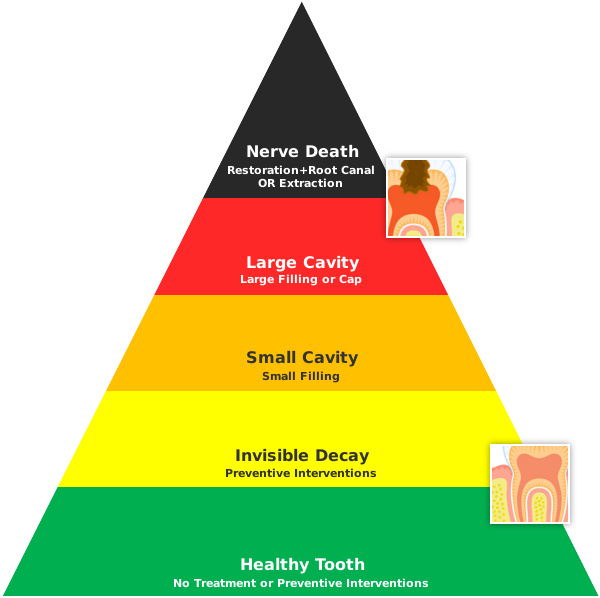Tooth decay appears to just happen similar to weeds appearing in a summer lawn! A check-up at the dentist may be fine at one visit or for several visits and then to your surprise you learn that a cavity has occurred. Actually a cavity is a result of the tooth decay process that typically takes months or years and the process is very difficult to see until it has advanced quite a lot. Once a cavity occurs, a filling is needed and if the decay has progressed deeply to infect the tooth’s nerve you also may need a root canal or extraction. This is one reason why it is important to treat a cavity when it is small. Better still is to prevent the decay process from developing into a cavity. This can be done because the tooth decay process can be reversed in its early stage. But the early stage of cavity development cannot always be seen by eye or an x-ray, which is why it is important to do a risk assessment. Risk assessment is the basis for the frequency that preventative care needs to be done and the specific interventions needed to prevent a cavity. How often you should visit your dentist for preventive services is special for you. It might be as frequently as 3 months or as long as 2 years. In addition to your risk for tooth decay other reasons that are used to determine how often you need to visit your dentist include your risk for gum disease, your risk for oral cancer, to check on any fillings and false teeth, and your desire to have your teeth professionally cleaned.
